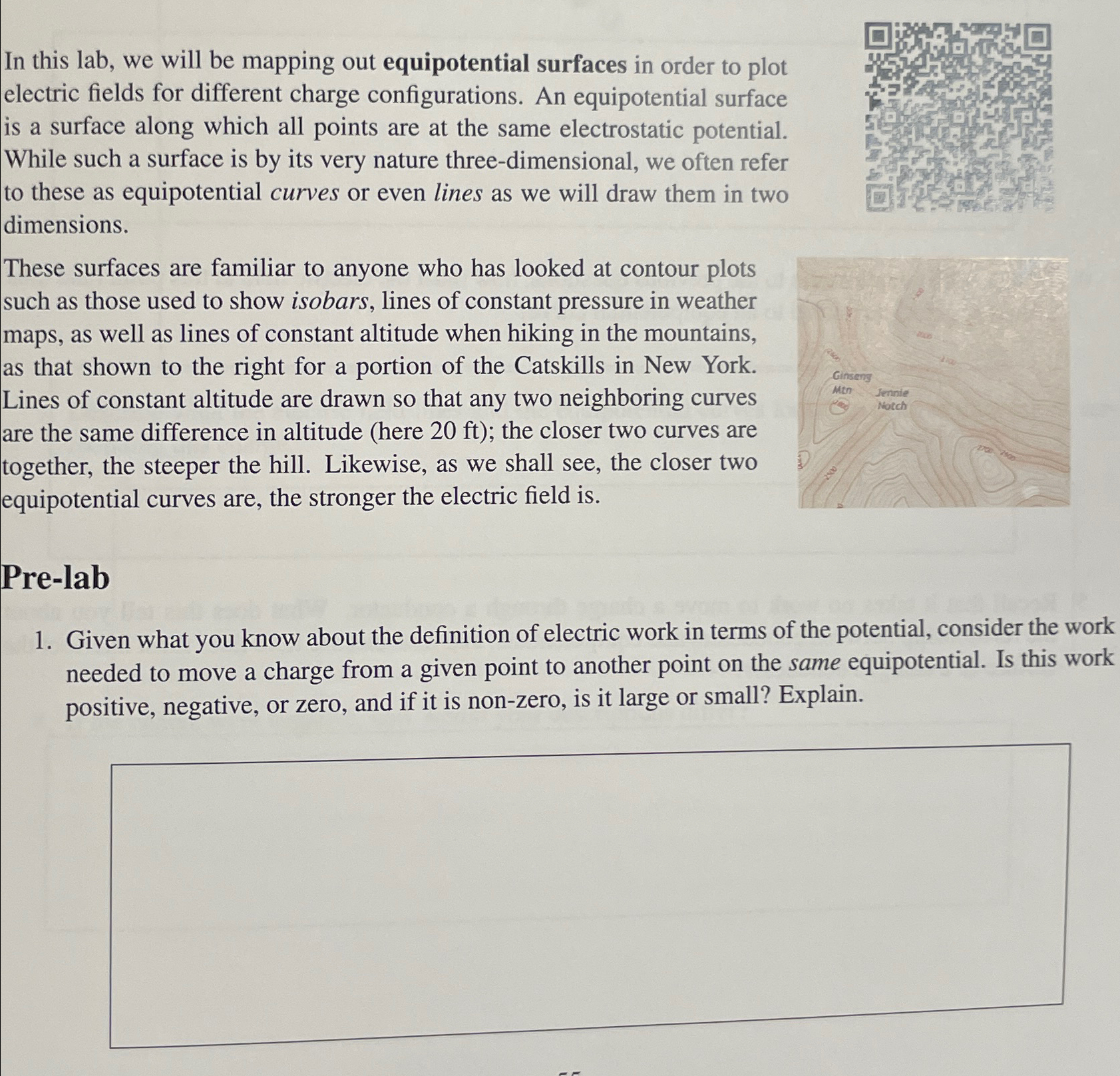Answered step by step
Verified Expert Solution
Question
1 Approved Answer
In this lab, we will be mapping out equipotential surfaces in order to plot electric fields for different charge configurations. An equipotential surface is

In this lab, we will be mapping out equipotential surfaces in order to plot electric fields for different charge configurations. An equipotential surface is a surface along which all points are at the same electrostatic potential. While such a surface is by its very nature three-dimensional, we often refer to these as equipotential curves or even lines as we will draw them in two dimensions. These surfaces are familiar to anyone who has looked at contour plots such as those used to show isobars, lines of constant pressure in weather maps, as well as lines of constant altitude when hiking in the mountains, as that shown to the right for a portion of the Catskills in New York. Lines of constant altitude are drawn so that any two neighboring curves are the same difference in altitude (here 20 ft); the closer two curves are together, the steeper the hill. Likewise, as we shall see, the closer two equipotential curves are, the stronger the electric field is. Pre-lab Ginseng Mtn Jennie Notch 1. Given what you know about the definition of electric work in terms of the potential, consider the work needed to move a charge from a given point to another point on the same equipotential. Is this work positive, negative, or zero, and if it is non-zero, is it large or small? Explain.
Step by Step Solution
There are 3 Steps involved in it
Step: 1

Get Instant Access to Expert-Tailored Solutions
See step-by-step solutions with expert insights and AI powered tools for academic success
Step: 2

Step: 3

Ace Your Homework with AI
Get the answers you need in no time with our AI-driven, step-by-step assistance
Get Started


